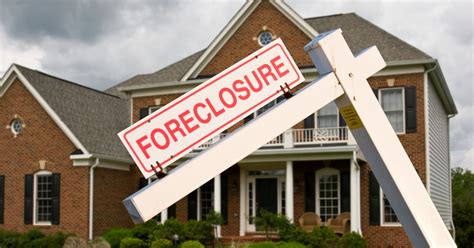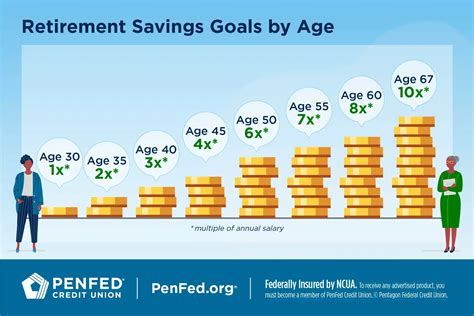
Cape Coral-Fort Myers, Florida, has become the nation’s foreclosure epicenter, grappling with a surge in filings that far outpaces national averages, driven by factors including Hurricane Ian’s lingering economic impact, unsustainable pandemic-era growth, and the expiration of foreclosure moratoriums. The metro area’s foreclosure rate stands at one in every 1,584 housing units, significantly higher than any other metropolitan area in the United States, according to ATTOM Data Solutions.
The spike in foreclosures highlights the precarious economic situation faced by many homeowners in the region, exacerbated by the devastating effects of Hurricane Ian in late 2022. While the immediate aftermath saw widespread relief efforts and temporary reprieves, the long-term financial consequences are now becoming starkly apparent. “The Cape Coral-Fort Myers area saw the worst of Hurricane Ian. We are still seeing the fallout from that. A lot of people have been unable to get back on their feet,” said Alexis LeBell, a real estate attorney in Fort Myers, in an interview with Yahoo Finance.
The storm not only inflicted massive property damage but also disrupted local economies, leading to job losses and reduced incomes for many residents. The subsequent struggle to afford mortgage payments has contributed significantly to the escalating foreclosure rates. “The combination of lingering storm impacts, inflated home prices during the pandemic, and the resumption of foreclosures after the moratorium lifted has created a perfect storm,” explained a local housing market analyst.
Adding to the problem is the unsustainable housing boom that occurred during the COVID-19 pandemic. Attracted by low interest rates and the allure of remote work, many people flocked to Southwest Florida, driving up home prices to record levels. However, as interest rates have risen and the pandemic-driven demand has cooled, many homeowners find themselves burdened with mortgages they can no longer afford.
“We saw an unprecedented influx of new residents during the pandemic,” noted a city official in Cape Coral. “This rapid growth put a strain on infrastructure and led to an artificial inflation of home values. Now, as the market corrects, we’re seeing the consequences.”
The expiration of foreclosure moratoriums, implemented during the pandemic to protect homeowners facing financial hardship, has also played a crucial role in the recent surge. With these protections now lifted, lenders are resuming foreclosure proceedings against delinquent borrowers, further contributing to the growing number of filings.
“The foreclosure moratoriums provided a temporary shield for homeowners, but they didn’t address the underlying financial issues,” stated a housing economist. “Now that these protections are gone, we’re seeing a wave of foreclosures that were delayed but not prevented.”
The situation in Cape Coral-Fort Myers is not unique, as foreclosure rates are rising across the country. However, the severity of the problem in this particular metro area underscores the complex interplay of factors that can contribute to a housing crisis. While the national foreclosure rate remains relatively low compared to historical averages, the localized surge in Southwest Florida serves as a warning sign of potential vulnerabilities in the housing market.
According to ATTOM’s latest data, other metropolitan areas with elevated foreclosure rates include Lakeland-Winter Haven, Florida, and Trenton, New Jersey. However, the Cape Coral-Fort Myers area stands out due to the magnitude of the increase and the unique combination of factors driving the surge.
The rise in foreclosures has significant implications for the local economy and the broader community. Beyond the immediate impact on affected homeowners, foreclosures can depress property values, destabilize neighborhoods, and strain local government resources.
“Foreclosures can have a ripple effect throughout the community,” warned a local community leader. “They not only displace families but also contribute to blight and decay, which can negatively impact the quality of life for everyone.”
Local officials and community organizations are working to address the foreclosure crisis by providing resources and assistance to homeowners at risk. These efforts include foreclosure prevention counseling, legal aid, and financial assistance programs.
“We’re committed to helping homeowners navigate these challenging times,” said a representative from a local housing agency. “We offer a range of services designed to help people stay in their homes and avoid foreclosure.”
However, the scale of the problem requires a multi-faceted approach that involves government, lenders, and community organizations working together to find sustainable solutions. This includes addressing the underlying economic issues that are contributing to the crisis, such as job losses and unaffordable housing.
“We need to create a more resilient economy that can withstand economic shocks and provide opportunities for everyone to thrive,” stated a local business leader. “This includes investing in job training, affordable housing, and infrastructure improvements.”
The situation in Cape Coral-Fort Myers serves as a reminder of the importance of responsible lending practices, sustainable growth policies, and effective disaster preparedness. By learning from the challenges faced by this community, policymakers and industry leaders can take steps to prevent similar crises from occurring in other parts of the country.
The fallout from Hurricane Ian continues to cast a long shadow over Southwest Florida, and the foreclosure crisis is just one manifestation of the challenges facing the region. As the community works to rebuild and recover, it is essential to address the underlying issues that have contributed to the crisis and create a more sustainable future for all residents.
Real estate professionals in the area are also feeling the pressure. Increased foreclosure activity can lead to a saturated market, making it harder to sell properties and potentially driving down prices further. “It’s a tough time for everyone in the real estate industry,” said one local realtor. “We’re working hard to help our clients navigate the market, but it’s definitely a challenging environment.”
Furthermore, the emotional toll on homeowners facing foreclosure cannot be overstated. The stress and uncertainty of losing one’s home can have a devastating impact on individuals and families. Mental health professionals in the area are reporting an increase in demand for their services as people struggle to cope with the financial pressures they are facing.
“We’re seeing a lot of people who are feeling overwhelmed and hopeless,” said a local therapist. “It’s important for people to know that they’re not alone and that there are resources available to help them.”
The long-term consequences of the foreclosure crisis in Cape Coral-Fort Myers remain to be seen. However, it is clear that the region faces significant challenges in the months and years ahead. By working together and implementing effective solutions, the community can overcome these challenges and build a stronger, more resilient future.
Analyzing the Root Causes
The convergence of several factors created this perfect storm in Cape Coral-Fort Myers. First, the area experienced a significant influx of people during the pandemic, driven by low interest rates and the rise of remote work. This surge in demand led to a rapid increase in home prices, often exceeding what local incomes could sustainably support. Second, Hurricane Ian caused widespread damage and economic disruption, leaving many residents unemployed or underemployed and unable to afford their mortgage payments. Third, the expiration of foreclosure moratoriums allowed lenders to resume foreclosure proceedings, further exacerbating the problem.
The pandemic-era housing boom was particularly pronounced in Southwest Florida. Attracted by the warm climate, relatively low cost of living, and relaxed lifestyle, many people from other parts of the country relocated to the region. This influx of new residents drove up demand for housing, leading to bidding wars and inflated prices.
However, this growth was not sustainable. As interest rates began to rise in 2022 and 2023, the cost of borrowing increased, making it more difficult for people to afford homes. At the same time, the demand for housing began to cool as the pandemic-driven migration slowed down.
The combination of higher interest rates and slowing demand put downward pressure on home prices, leaving many homeowners underwater on their mortgages. This means that they owed more on their homes than they were worth, making it difficult to sell or refinance.
Hurricane Ian then compounded the problem. The storm caused widespread damage to homes and businesses, leaving many people unemployed and unable to afford their mortgage payments. The storm also disrupted the local economy, making it more difficult for businesses to recover and create jobs.
The expiration of foreclosure moratoriums was the final blow. These moratoriums had provided temporary relief to homeowners facing financial hardship, but they did not address the underlying problems. When the moratoriums expired, lenders began to resume foreclosure proceedings, leading to a surge in filings.
Community Response and Mitigation Efforts
Recognizing the severity of the foreclosure crisis, local officials and community organizations have launched a number of initiatives to help homeowners at risk. These initiatives include:
- Foreclosure Prevention Counseling: This counseling provides homeowners with information and resources to help them understand their options and avoid foreclosure.
- Legal Aid: This aid provides free legal assistance to homeowners facing foreclosure.
- Financial Assistance Programs: These programs provide financial assistance to homeowners who are struggling to make their mortgage payments.
In addition to these initiatives, local officials are also working to address the underlying economic issues that are contributing to the crisis. This includes investing in job training, affordable housing, and infrastructure improvements.
One key strategy is to diversify the local economy. Relying too heavily on tourism and real estate makes the region vulnerable to economic downturns. Efforts to attract new industries and create higher-paying jobs can help to stabilize the economy and provide residents with more opportunities.
Another important strategy is to increase the supply of affordable housing. This can be achieved through a variety of means, such as incentivizing developers to build affordable units, providing subsidies to low-income renters, and enacting zoning reforms that allow for denser housing.
Looking Ahead: Lessons Learned and Future Strategies
The foreclosure crisis in Cape Coral-Fort Myers serves as a cautionary tale about the dangers of unsustainable growth, inadequate disaster preparedness, and lax lending practices. By learning from this experience, policymakers and industry leaders can take steps to prevent similar crises from occurring in other parts of the country.
One key lesson is the importance of responsible lending. Lenders should carefully assess borrowers’ ability to repay their loans and avoid offering mortgages that are too risky or unsustainable. This includes avoiding subprime mortgages and other predatory lending practices.
Another important lesson is the need for better disaster preparedness. Communities should develop comprehensive disaster plans that address the needs of vulnerable populations, such as low-income homeowners. This includes providing assistance with evacuation, shelter, and recovery.
Finally, policymakers should enact policies that promote sustainable growth and prevent housing bubbles. This includes regulating land use, promoting affordable housing, and investing in infrastructure.
The road to recovery for Cape Coral-Fort Myers will be long and challenging. However, by working together and implementing effective solutions, the community can overcome this crisis and build a stronger, more resilient future. This requires a comprehensive approach that addresses the immediate needs of homeowners at risk, as well as the underlying economic and social factors that contributed to the crisis. Investing in education and job training programs, supporting small businesses, and promoting affordable housing options will be crucial for creating a more stable and equitable community.
The situation also underscores the importance of financial literacy. Many homeowners may not have fully understood the terms of their mortgages or the risks involved in taking on debt. Providing access to financial education programs can help people make more informed decisions about their finances and avoid falling into debt traps.
Furthermore, government agencies and non-profit organizations need to collaborate effectively to provide comprehensive support to affected homeowners. This includes streamlining the application process for assistance programs and ensuring that resources are readily available to those who need them.
Ultimately, addressing the foreclosure crisis in Cape Coral-Fort Myers requires a long-term commitment from all stakeholders. By learning from past mistakes and working together to create a more sustainable and equitable community, the region can overcome this challenge and build a brighter future for its residents. The focus should be on creating a diversified economy that provides opportunities for all, ensuring access to affordable housing, and promoting responsible lending practices. This will require a coordinated effort from government, businesses, and community organizations, all working together to build a more resilient and prosperous future for Southwest Florida.
The situation in Cape Coral-Fort Myers highlights the interconnectedness of various factors that can contribute to a housing crisis. It’s not just about individual homeowners struggling with their mortgages; it’s about the broader economic context, the impact of natural disasters, and the policies and practices that shape the housing market. By understanding these interconnections, we can develop more effective strategies for preventing and mitigating future housing crises.
FAQ: Foreclosure Crisis in Cape Coral-Fort Myers
-
What is driving the foreclosure surge in Cape Coral-Fort Myers, Florida? The surge is driven by a combination of factors, including the lingering economic impact of Hurricane Ian, an unsustainable housing boom during the COVID-19 pandemic, the expiration of foreclosure moratoriums, rising interest rates, and subsequent housing market corrections, leaving many homeowners with unaffordable mortgages.
-
How does the foreclosure rate in Cape Coral-Fort Myers compare to the rest of the United States? The foreclosure rate in Cape Coral-Fort Myers is significantly higher than the national average. According to ATTOM Data Solutions, the metro area has a foreclosure rate of one in every 1,584 housing units, making it the foreclosure capital of the U.S.
-
What kind of assistance is available to homeowners facing foreclosure in the Cape Coral-Fort Myers area? Various resources are available, including foreclosure prevention counseling, legal aid, and financial assistance programs offered by local housing agencies, community organizations, and government entities. These programs aim to help homeowners navigate their options and stay in their homes.
-
What is the local government doing to address the foreclosure crisis? Local officials are working on multiple fronts, including supporting foreclosure prevention programs, investing in job training initiatives, promoting affordable housing options, and diversifying the local economy to reduce reliance on tourism and real estate.
-
What are the long-term implications of the foreclosure crisis for the Cape Coral-Fort Myers community? The long-term implications include depressed property values, destabilized neighborhoods, strain on local government resources, and potential blight. The crisis also has emotional and mental health consequences for affected homeowners and can impact the overall quality of life in the community. Recovery requires a comprehensive and sustained effort to address the underlying economic and social factors contributing to the crisis.









